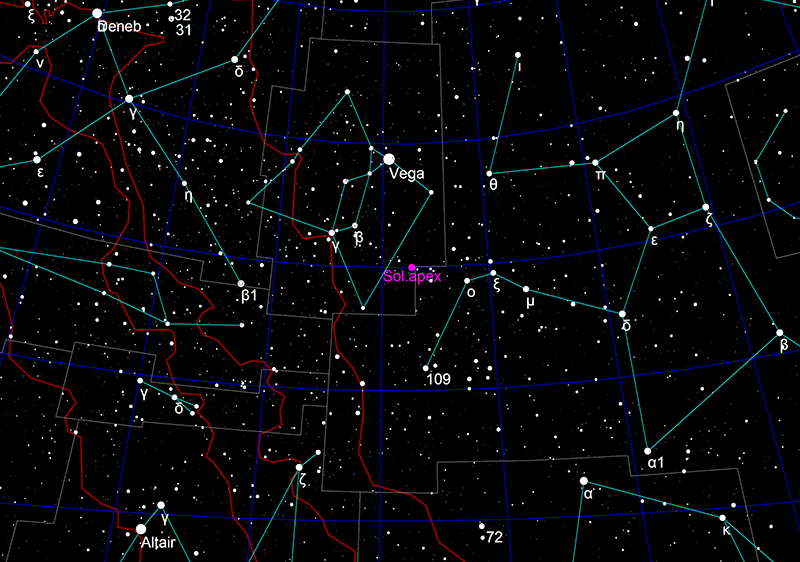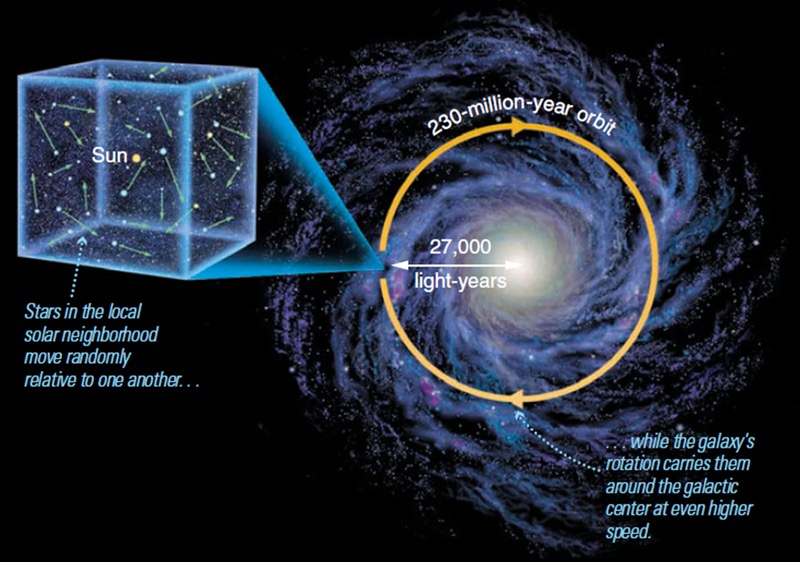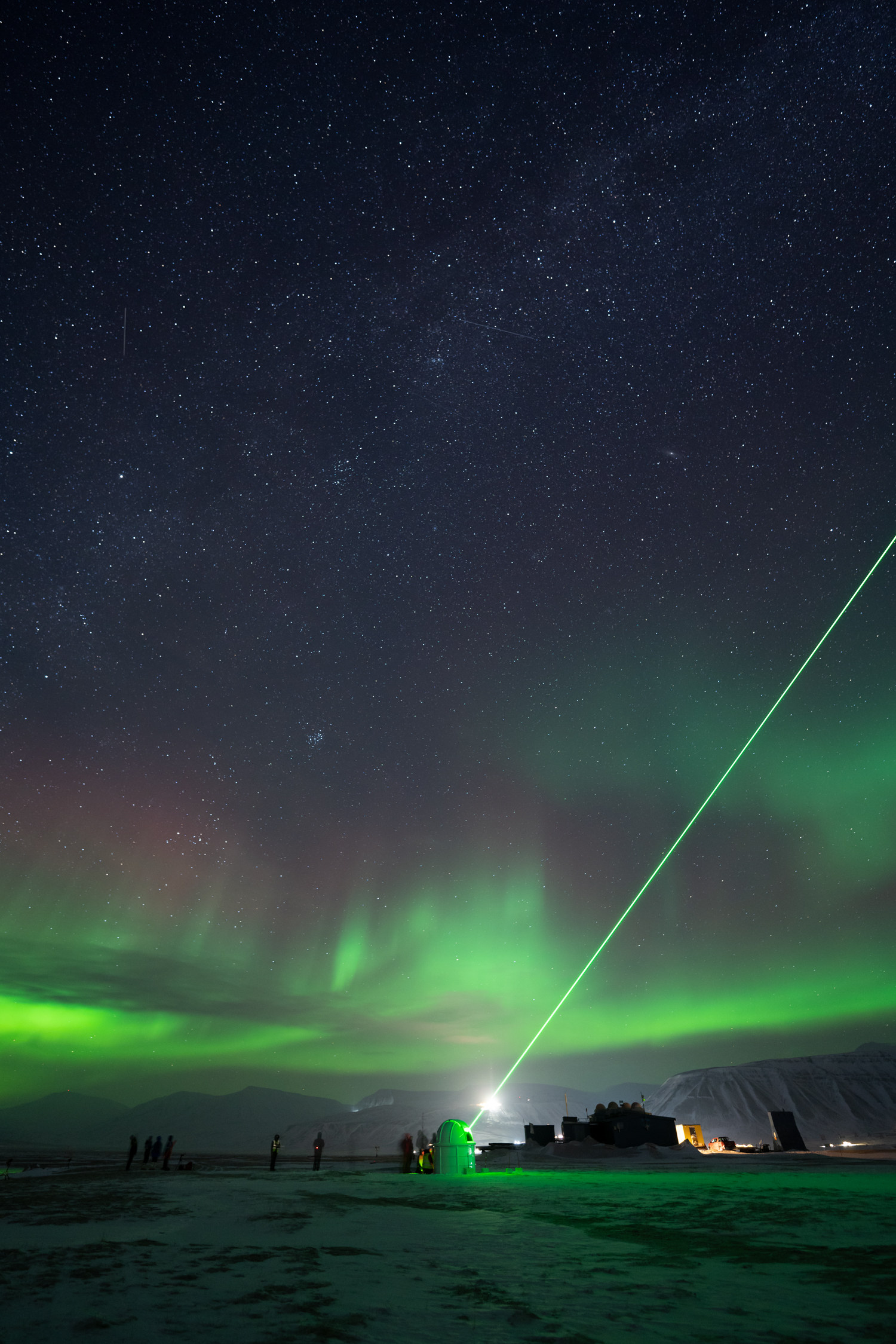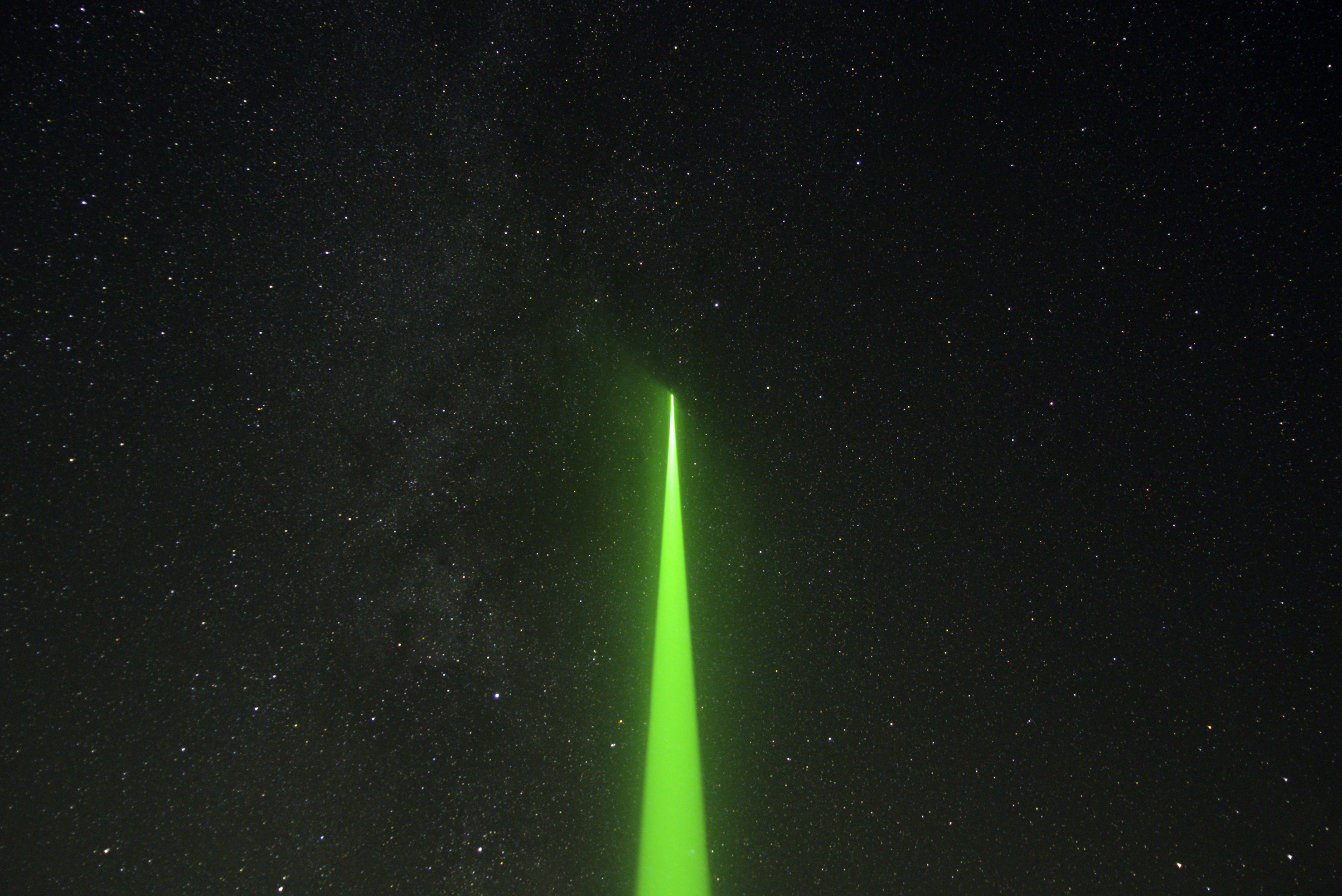Time Line
November & December 2021
Longyearbyen, Svalbard
Drawing a line of light in the sky with a powerful 10-watt laser, Time Line marks the exact direction our solar system is moving in space. The laser is aimed at a particular coordinate in the sky: the solar apex, which marks the direction our sun is traveling in our stellar neighborhood of the Milky Way Galaxy (and taking us along with it). The solar apex is located in our northern sky, between the constellations of Lyra and Hercules. As our planet spins and the stars rotate overhead, Time Line’s laser follows this motion, drawing a physical line of light along the trajectory of our planet, extending infinitely into space.


Illustration: Tom Ruen
This line of light is an actual illumination of our physical timeline. We can look in the direction of our travel and see where our future will take place, somewhere along this thin path laid out before us. What will Svalbard be like—what will our world be like—down this line? The future, by its nature, is something we cannot see or know. While this is no new phenomenon, uncertainty about the future of our home world has come to define this moment we live in.
Time Line is an opportunity to experience looking into true infinity—a precise line showing you the way to the future.
This project is directly inspired by Svalbard. Specifically, by the work of two observatories nearby at the scientific research station in Ny-Ålesund, Svalbard. First, the Koldewey Aerosol Raman Lidar (KARL) operated by the institute AWIPEV, is an observatory that shoots a green LIDAR (a pulsed laser) ~90º up into the atmosphere to monitor pollution from sources like volcanoes, forest fires, and industry. Second, the Geodetic Earth Observatory, operated by the Norwegian Mapping Authority (Kartverket), is a radio telescope that monitors movements in Earth’s surface, the rotation of the planet—and in relation to this project—Earth’s exact position in space. Time Line brings together the visuals and concepts of these two observatories: KARLS’s monumental green laser that appears to extend infinitely into space, and the planetary focus of Kartverket’s geodetic research.
The green colour of the laser was chosen specifically because the goal of the project is to make something invisible become visible. Therefore, lime green with a 532nm wavelength was chosen, as the human eye is most sensitive to colours in this range. In addition, the colour is very close to the green of the aurora borealis: the iconic arctic phenomenon that is created by energized particles from the sun interacting with the planet’s magnetic field.


Photos: Preben Irgens





Photos: Preben Irgens
Video: Jannicke Mikkelsen
Time Line was hosted by Artica Svalbard and curated by Office for Contemporary Art Norway:

Generously supported by:
